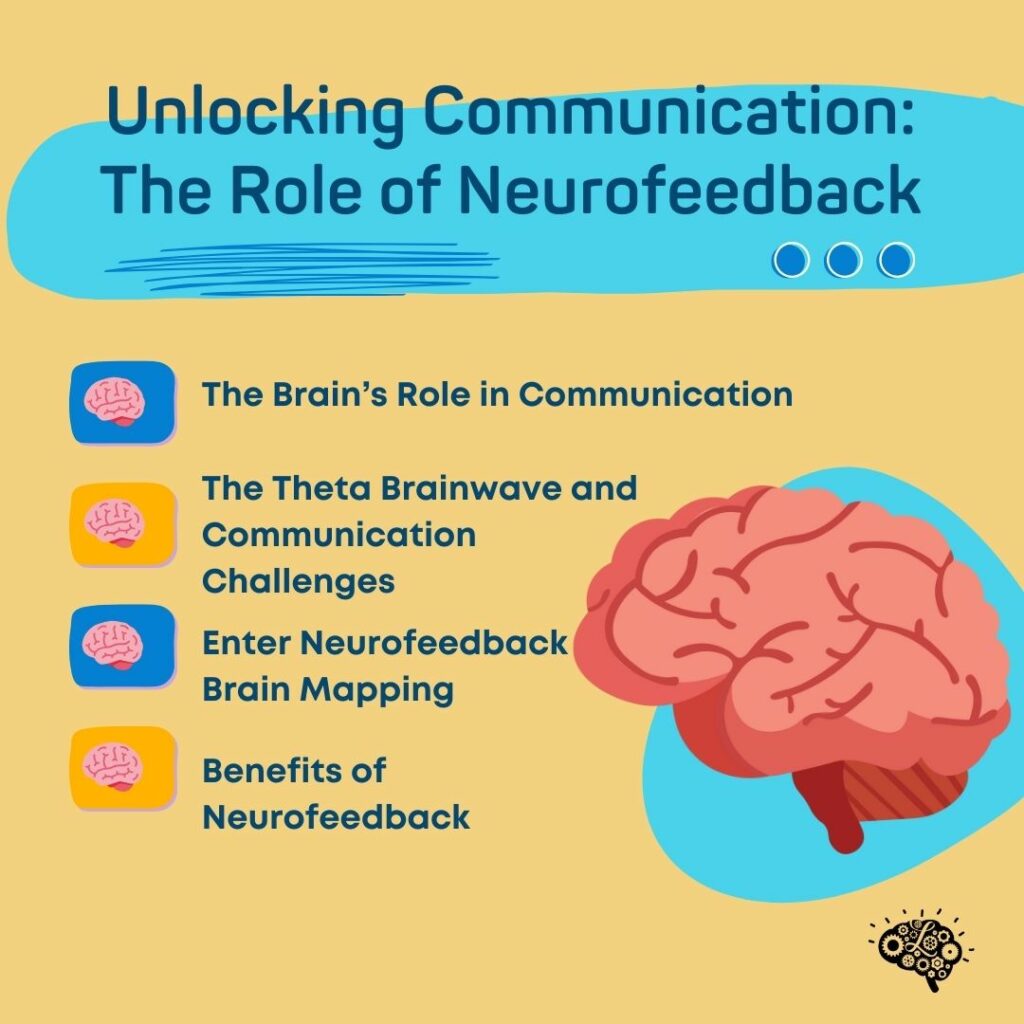May is Better Speech and Hearing Month, a time to raise awareness about the importance of effective communication. Dr. Leigh is a cognitive neuroscientist and certified neurofeedback practitioner. She has witnessed firsthand how communication difficulties impact individuals’ lives. This blog will explore how neurofeedback brain training can enhance speech and language abilities, particularly in stuttering and other communication disorders.

The Brain’s Role in Communication
Brain function lies at the core of speech and hearing challenges. Specifically, we’ll focus on the left hemisphere, which plays a central role in language processing. Let’s break it down:
- Language Production Areas (Frontal Lobe): These regions formulate speech commands. When you speak, your brain activates these areas to organize words, sentences, and articulation.
- Language Comprehension Areas (Temporal and Parietal Lobes): Located toward the back of the brain, these regions process incoming auditory information, allowing you to understand spoken language, recognize words, and interpret meaning. They allow you to understand spoken language, recognize words, and interpret meaning.
- Sensory and Motor Cortex: Situated across the brain’s center, these areas bridge the gap between language processing and physical execution. Once programmed in the left hemisphere, the language crosses over to the motor cortex for implementation and physical execution.
The Theta Brainwave and Communication Challenges
Theta brainwaves are associated with slow processing and can contribute to communication difficulties such as stuttering or comprehension issues. When someone experiences communication difficulties—stuttering or comprehension issues—theta activity may be excessive in specific brain regions. This sluggish processing affects both motor speech production and language understanding.
Enter Neurofeedback through Brain Mapping
Neurofeedback provides a window into brain performance. Using a qEEG brain map, we can assess theta levels, fast processing (contributing to stress), and overall brain function. Here’s how it works:
- Sign up for your qEEG Brain Map: Access our online digital program and complete your intake paperwork.
- Order Your Hardware: a brain-sensing headband, sensor, and conductive paste. Delivery is worldwide.
- Onboarding Meeting: Meet with a neuro coach to show you how to perform the qEEG Brain Map and answer any questions.
- At-Home Brain Mapping: You perform the qEEG brain map at home (it takes just 28 minutes). This non-invasive process captures your brain’s electrical activity.
- Zoom Consultation: Dr. Leigh analyzes your brain map during a one-hour Zoom meeting. She’ll explore which areas exhibit excessive theta and discuss strategies for balance.
- Recommendation: Receive a personalized protocol to fit your individual needs based on your qEEG Brain Map.
Benefits of Neurofeedback
- Reduced Theta: Enhancing communication efficiency by training the brain to regulate theta activity.
- Stress Reduction: Addressing fast processing helps manage stress and anxiety.
- Improved Quality of Life: Effective communication fosters connections, boosts confidence, and enriches daily interactions.
Conclusion
As we celebrate Better Speech and Hearing Month, let’s recognize the power of neurofeedback. By optimizing brain function, we empower individuals to express themselves fully. If you or someone you know faces communication challenges, consider exploring neurofeedback—a journey toward more transparent, more confident communication.
Remember, your brain is adaptable, and positive change is within reach. Let’s unlock the potential for better speech and hearing with Neurofeedback Coaching! 🗣️🧠👂


